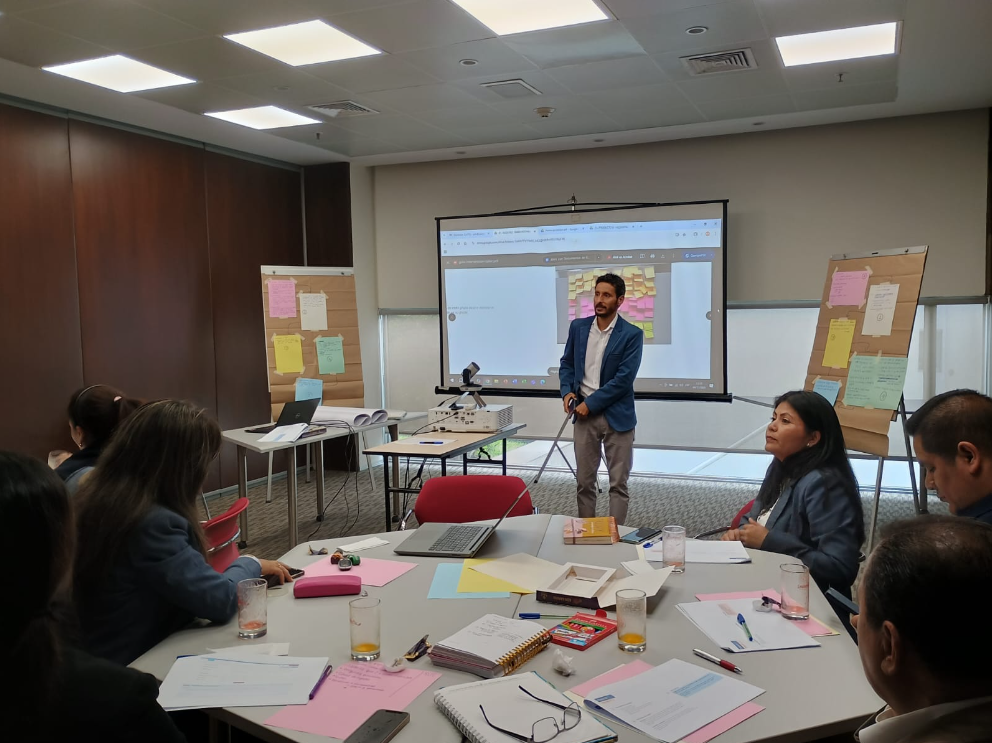Summary
The International Labour Organization (ILO) is collaborating with the Ministry of Labor (MTPE) and the National Superintendency of Tax Administration (SUNAT) on a project to formalize domestic work. Within this context, the ILO tasked me with evaluating the user experience of the current Peruvian government web application for registering, modifying, and canceling domestic workers' contracts. Additionally, I proposed improvements to simplify the process.
Problem
The user journey has specific pain points that may lead to dropouts. Furthermore, the registration process creates fear among users due to communication focused on administrative sanctions, deadlines, etc., rather than benefits or motivational aspects.
Consultancy Objectives
Identify factors that discourage registration • Pinpoint abandonment points • Propose validated, feasible solutions with input from stakeholders (government officials responsible for the process).
User Profile
Employers of domestic workers, both full-time and part-time, with or without registered contracts.
My Role
Collect background information • journey mapping • Usability testing • Redesign
Methodology
The User-Centered Design (UCD) methodology was chosen, ensuring user and stakeholder participation in both the research and solution development (co-creation) phases.
Research and Diagnosis
Research Design
The research focused on three areas:: 1) Desk research: Gathering existing information from the client and stakeholders; 2) Attitudinal study: Understanding users' perceptions and motivations; 3) Contextual study: Observing how users interact with the application and government officials.
Heuristic Analysis
Usability standards were assessed, revealing that while the application met basic standards, it was not fully user-friendly.


Benchmark
Processes in Chile, Argentina, Colombia, and Costa Rica were analyzed. Argentina’s process stood out for its organized information and clear navigation.
Interviews
Employers were selected across different scenarios (part-time, full-time, with and without registered contracts) to ensure representativeness. A guide was developed for the interviews, which included two parts: 1) Questions; 2) A usability test using a simulated flow linked to the Maze platform.
.

Data Organization
Interview data was processed using Dovetail, categorizing recurring themes and pain points (e.g., abandonment points, discouraging factors).




Journey map
The user journey on the current application was divided into five stages. For each stage, tasks, user perceptions, and improvement opportunities were detailed.
Usability Test
The usability test identified the following issues: 1) Lack of clear information or positive messaging on the landing page; 2) Password recovery not integrated into the main flow; 3) Additional steps for validations that could be handled internally; 4) Ambiguous fields requiring sensitive decisions.
Regarding the quantitative aspect, metrics for efficiency, effectiveness, and satisfaction were collected. Time to complete registration was 9.87 minutes, which led to the goal of reducing it to 3 minutes, considering the presence of unnecessary steps. In terms of effectiveness, an Abandonment rate of 44% was recorded, mainly due to the previously mentioned pain points. Finally, the Customer Satisfaction Score (CSAT) was 5.7/10, this metric only considers those who completed the flow.



Ideation and Prototyping
Co-creation Workshop
Using identified pain points, we moved to ideation and prioritization. A co-creation workshop included users and stakeholders, including decision-makers who committed to improvements during the session. IT specialists also assessed the technical feasibility of proposed ideas.




UI Design
With all gathered information (findings, prioritized improvements, commitments, and constraints), we developed prototypes. The goal was to simplify the flow and unify the platforms and communication surrounding the process.


Client Testimonial
Thank you for the work. Having a proposal focused on improving the Home Work Registry is a big step. We will continue working from the ILO’s Opening Doors project with the MTPE to ensure it is implemented and achieves its goal.
Next Steps
Validate the prototype with users and iterate • Implement a pilot in a real environment • Create metrics and monitoring processes.
Lessons learned
Involving stakeholders in this project was essential. Their participation improved the quality of decisions and sped up the process, as they felt more interested in the results.






